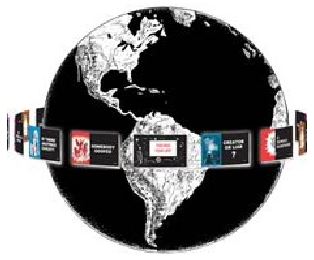Can You Trust Your Bible?
- Issue Date: November/December 2008
When someone says to you, "the Bible is just a bunch of legends put together decades or centuries later," he is not aware of the facts. Archeologists in the Holy Land are continually digging up proof of the accuracy of Bible history.
Each new civilization added a layer on top of the ruins of the last. Pottery, coins, and signet seals lace each layer and they match the periods of Bible history.
Recent finds include two small seals found in the layer of the time of Solomon`s temple. Inscriptions on the seals name men mentioned in the Bible at that time. One is Gedaliah, son of Pashur and the other is Jucal son of Shelemiah, both mentioned in Jeremiah 38.
These are just small examples of the thousands of items that have been found in the layers of history in the Holy Land. Another seal found is thought to be of Queen Jezebel in 1 Kings 16. 12,000 pieces of intricately carved ivory come from a layer of the time of Ahab in 1 Kings 22 which speaks of him building an "ivory house."
Typing "biblical archeology" into Google leads to a huge amount of proof that the history in the Bible is beyond question. No other ancient story has anywhere near the historical record that the Bible does.
The other accusation against the Bible is that it has been changed over the centuries so that we cannot trust what we have to really be God`s inspired words. Proof that this is not true lies in over a million pages of old Bibles available in museums around the globe. Officials agree that none of these manuscripts contain anything significantly contradictory to the Bible as we have it today.
God preserved the Old Testament by placing an awe in the hearts of the scribes who made copies down through the centuries. The system was so tight that, even if one letter was left out of a copy, they would know it. They counted the number of words and even letters in each book and would discard a copy if the numbers did not add up.
The New Testament history is somewhat different. Author David W. Daniels describes two streams of manuscripts that originated in Jerusalem when the apostles wrote the first copies. His book, Did the Catholic Church Give Us the Bible? shows how one stream flowed north through Antioch and into Europe culminating with the King James Version that set the standard for the English language of the next three hundred years.
The other stream flows through Alexandria, Egypt, where "learned scholars" of the day took liberties with the text to include their own philosophical or theological slant. Only a few of the manuscripts that we have today came from Alexandria, and they are full of omissions, contradictions and "corrections."
Yet, these are the manuscripts used for the basis of the modern Bible versions. Daniels details how the thousands of consistent manuscripts in the northern stream were ignored by the translators of the modern bibles.
They used the flawed Alexandrian manuscripts that omit important passages and change the actual meaning of others. Daniels` other book, Answers to Your Bible Version Questions, helps you understand why the KJV is the only Bible in English that you can trust to be God`s preserved words.
- See more articles on related topics:
- Bible Versions
- History
- Modern Versions
Other Articles from November/December 2008:
- Failed JW Prophecies - Good
Witnessing Points
- Green River Fossil Foolishness
- Who Really Owns Jerusalem?
- Congressman Says 'Send the Jihadists Home!'
- A Message From Jack Chick
- Homosexual Journalist Admits, 'Gay Lifestyle is a Sewer'
- Chick Mail Bag Nov-2008
- No-Compromise Gospel Film
Now in More Languages
- Tract Passing Tips - November 2008
- Vatican Synod Says Bible Not The Only Word of God
More on Bible Versions:
Products of Interest:
-

51 Reasons Why The King James
224 pages
Here are 51 reasons to trust that God kept His promise to preserve His own words. -

Look What's Missing!
256 pages
For years, publishers have been removing words, and even whole verses, from modern Bibles. What's missing from your Bible? Take a look! -

Did the Catholic Church Give Us the Bible?
208 pages
The Bible has two histories. One is of God preserving His words through His people. The other is of the devil using Roman Catholic "scholars" to pervert God’s words and give us corrupt modern Bibles. -

Why the KJV Bible is the Perfect Word of God.
48 pages
This unique five-lesson Bible study workbook builds people's faith in God's Word, the 1611 King James Bible. Great for home groups, Sunday School classes, and new converts.



